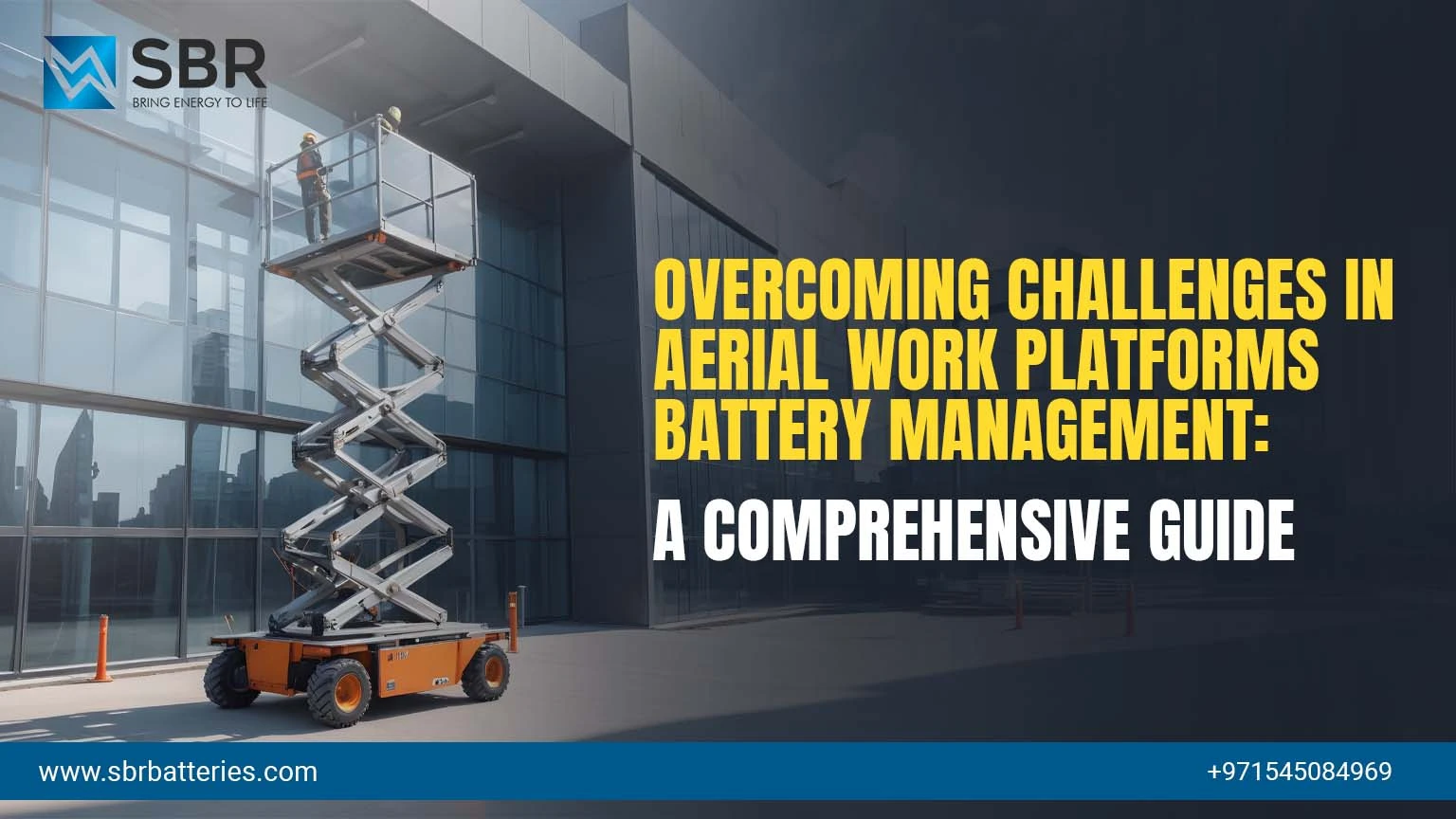
Overcoming Challenges in Aerial Work Platforms Battery Management: A Comprehensive Guide
Overview
Aerial Work Platforms (AWPs) are an inevitable part of many sectors that allows the laborers to work in heights without any fear of safety. These platforms are majorly employed in construction and maintenance divisions. With proper battery management, AWP can serve as a reliable partner without causing any interruption. Through this blog, we will explore the challenges you may face while using an AWP and the solutions to conquer them.
Comprehending the Challenges
1. Battery Lifespan: Even though batteries are utilized in AWPs for getting powered, their lifespan is found to remain short incase of no proper upkeep. The main reasons for poor battery life are found to be deep discharge, poor maintenance and overcharging.
2. Charging Infrastructure: Not all worksites will be equipped with proper charging stations and this can lead to job interruption due to the batteries not being able to be charged at required times.
3. Battery Monitoring: In order to prevent job interruption and poor performance due to battery failure, regular monitoring of batteries is very crucial. In case of fleets of considerable size and dim and distant locations, conventional monitoring methods may not seem sufficient.
4. Environmental Factors: Certain environmental factors like humidity, temperature extremities,sandstorms and other ecological aspects could adversely affect the life and performance of the battery. Employing AWPs in severe conditions can enhance the degree of battery degradation.
Effective Battery Management Solutions
We had discussed above the possible challenges that could be face while using AWPs. Let’s try to understand the possible solutions available for the effective and efficient maintenance of batteries in AWPs.
1. Battery Management Systems (BMS) Implementation: Implementing BMS will deliver you real time data regarding the health of the battery, battery performance as well as charging status. Constantly monitoring these real time data will help you identify any issues before it gets worse and help you work on it.
2. Employ Smart Charging Stations: Investing in smart charging stations that deliver quick charging, temperature control as well as monitoring the charging status remotely will considerably lower the charging as well as downtime duration. Employing portable charging stations can help you work uninterruptedly in locations with little power access.
3. Adopt Predictive Maintenance Practices: Leveraging algorithms that analyze the data received from BMS and give timely alerts for maintenance is one of the best ways to prevent any battery failures. These algorithms help to schedule maintenance in advance and chart the jobs without causing any interruption.
4. Implement Environmental Controls: It’s important to make sure that the AWP batteries are adequately protected from any harsh climatic conditions that can hinder the performance and lifespan of the battery. Proving proper enclosures, temperature controlled storage options as well as insulations can help reduce the damage that can be caused to batteries.
Conclusion
Proper battery management will make sure the batteries are working properly for a really long time without any long downtime providing optimal performance. Comprehending the potential challenges that could be faced and the possible solutions that will help you overcome the challenges will help you prevent any disruption in work and at the same time help you enhance productivity. Investing in BMS and smart charging stations could cost you a bit more in the initial stages. But in the long run, they will benefit you by helping to enhance the battery life and quality of job. If you ‘re looking for batteries that best suit the AWP, you can contact SBR Batteries who are the trusted experts in the industry.
